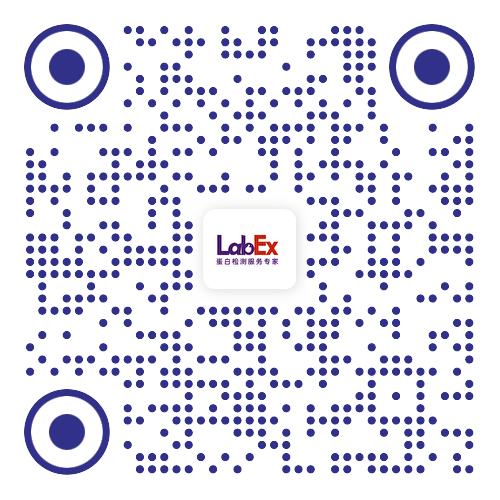Novel App knock-in mouse model shows key features of amyloid pathology and reveals profound metabolic dysregulation of microglia
Keywords:Astrogliosis; Lipid dyshomeostasis; Neuritic plaques; Neurodegeneration; Phagocytic microglia; Vascular amyloid.- Mol Neurodegener
- 17.5
- 2022 Jun 11;17(1):41.
- MSD
- 免疫/内分泌
- 免疫/内分泌
- Aβ38 (4G8),Aβ40 (4G8),Aβ42 (4G8)
- doi: 10.1186/s13024-022-00547-7.
相关货号
LXMA03-1
Abstract
Background:Genetic mutations underlying familial Alzheimer's disease (AD) were identified decades ago, but the field is still in search of transformative therapies for patients. While mouse models based on overexpression of mutated transgenes have yielded key insights in mechanisms of disease, those models are subject to artifacts, including random genetic integration of the transgene, ectopic expression and non-physiological protein levels. The genetic engineering of novel mouse models using knock-in approaches addresses some of those limitations. With mounting evidence of the role played by microglia in AD, high-dimensional approaches to phenotype microglia in those models are critical to refine our understanding of the immune response in the brain.
Methods:We engineered a novel App knock-in mouse model (AppSAA) using homologous recombination to introduce three disease-causing coding mutations (Swedish, Arctic and Austrian) to the mouse App gene. Amyloid-β pathology, neurodegeneration, glial responses, brain metabolism and behavioral phenotypes were characterized in heterozygous and homozygous AppSAA mice at different ages in brain and/ or biofluids. Wild type littermate mice were used as experimental controls. We used in situ imaging technologies to define the whole-brain distribution of amyloid plaques and compare it to other AD mouse models and human brain pathology. To further explore the microglial response to AD relevant pathology, we isolated microglia with fibrillar Aβ content from the brain and performed transcriptomics and metabolomics analyses and in vivo brain imaging to measure energy metabolism and microglial response. Finally, we also characterized the mice in various behavioral assays.
Results:Leveraging multi-omics approaches, we discovered profound alteration of diverse lipids and metabolites as well as an exacerbated disease-associated transcriptomic response in microglia with high intracellular Aβ content. The AppSAA knock-in mouse model recapitulates key pathological features of AD such as a progressive accumulation of parenchymal amyloid plaques and vascular amyloid deposits, altered astroglial and microglial responses and elevation of CSF markers of neurodegeneration. Those observations were associated with increased TSPO and FDG-PET brain signals and a hyperactivity phenotype as the animals aged. Discussion:Our findings demonstrate that fibrillar Aβ in microglia is associated with lipid dyshomeostasis consistent with lysosomal dysfunction and foam cell phenotypes as well as profound immuno-metabolic perturbations, opening new avenues to further investigate metabolic pathways at play in microglia responding to AD-relevant pathogenesis. The in-depth characterization of pathological hallmarks of AD in this novel and open-access mouse model should serve as a resource for the scientific community to investigate disease-relevant biology.
Keywords:Astrogliosis; Lipid dyshomeostasis; Neuritic plaques; Neurodegeneration; Phagocytic microglia; Vascular amyloid.
Methods:We engineered a novel App knock-in mouse model (AppSAA) using homologous recombination to introduce three disease-causing coding mutations (Swedish, Arctic and Austrian) to the mouse App gene. Amyloid-β pathology, neurodegeneration, glial responses, brain metabolism and behavioral phenotypes were characterized in heterozygous and homozygous AppSAA mice at different ages in brain and/ or biofluids. Wild type littermate mice were used as experimental controls. We used in situ imaging technologies to define the whole-brain distribution of amyloid plaques and compare it to other AD mouse models and human brain pathology. To further explore the microglial response to AD relevant pathology, we isolated microglia with fibrillar Aβ content from the brain and performed transcriptomics and metabolomics analyses and in vivo brain imaging to measure energy metabolism and microglial response. Finally, we also characterized the mice in various behavioral assays.
Results:Leveraging multi-omics approaches, we discovered profound alteration of diverse lipids and metabolites as well as an exacerbated disease-associated transcriptomic response in microglia with high intracellular Aβ content. The AppSAA knock-in mouse model recapitulates key pathological features of AD such as a progressive accumulation of parenchymal amyloid plaques and vascular amyloid deposits, altered astroglial and microglial responses and elevation of CSF markers of neurodegeneration. Those observations were associated with increased TSPO and FDG-PET brain signals and a hyperactivity phenotype as the animals aged. Discussion:Our findings demonstrate that fibrillar Aβ in microglia is associated with lipid dyshomeostasis consistent with lysosomal dysfunction and foam cell phenotypes as well as profound immuno-metabolic perturbations, opening new avenues to further investigate metabolic pathways at play in microglia responding to AD-relevant pathogenesis. The in-depth characterization of pathological hallmarks of AD in this novel and open-access mouse model should serve as a resource for the scientific community to investigate disease-relevant biology.
Keywords:Astrogliosis; Lipid dyshomeostasis; Neuritic plaques; Neurodegeneration; Phagocytic microglia; Vascular amyloid.
金课堂之文献解析 文献原文请点击
本网站销售的所有产品及服务均不得用于人类或动物之临床诊断或治疗,仅可用于工业或者科研等非医疗目的。











 沪公网安备31011502400759号
沪公网安备31011502400759号
 营业执照(三证合一)
营业执照(三证合一)


